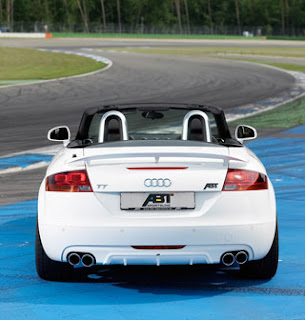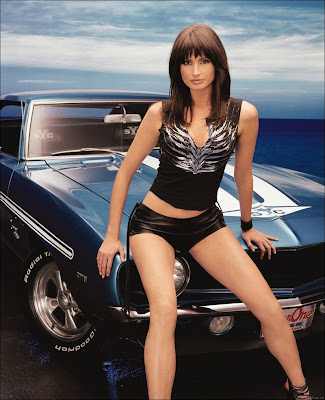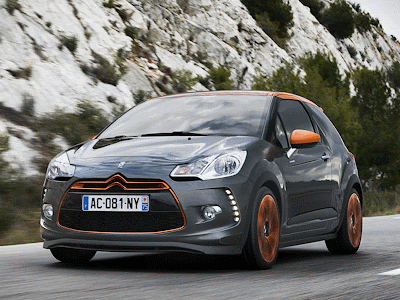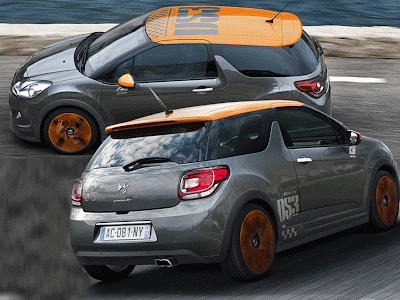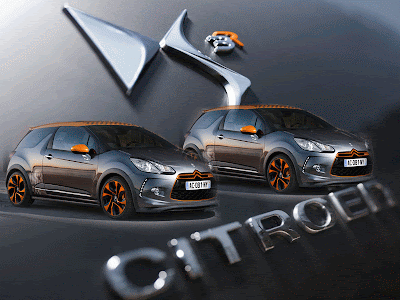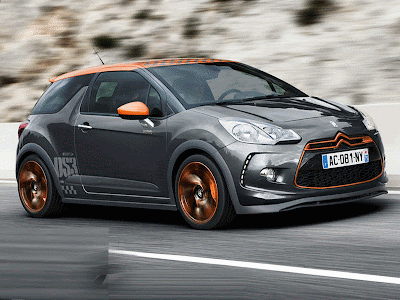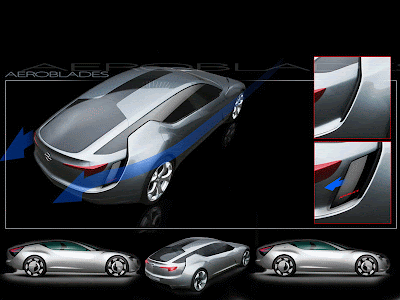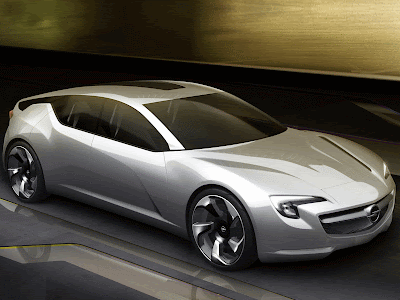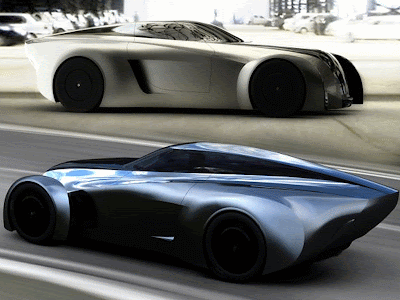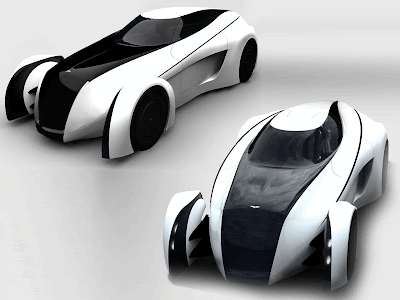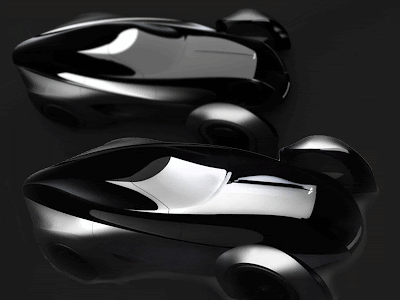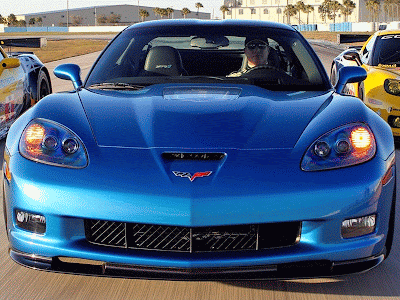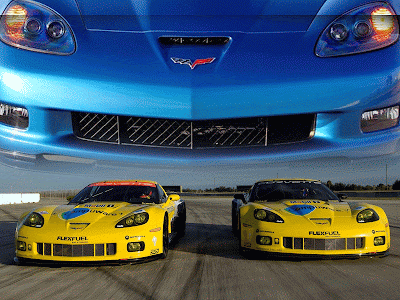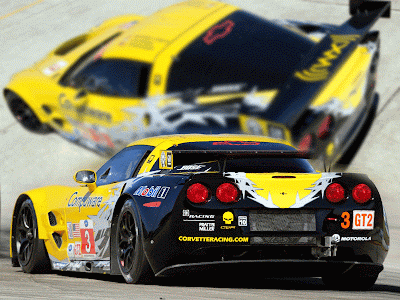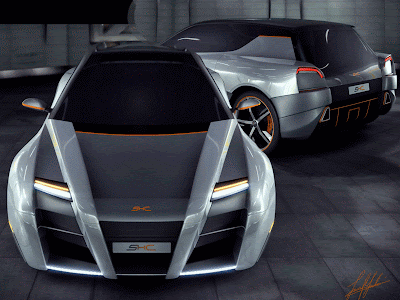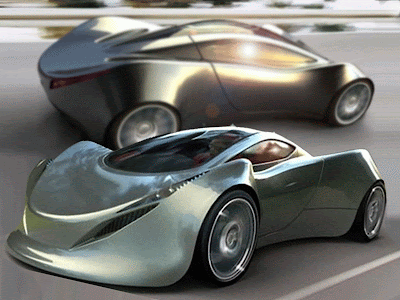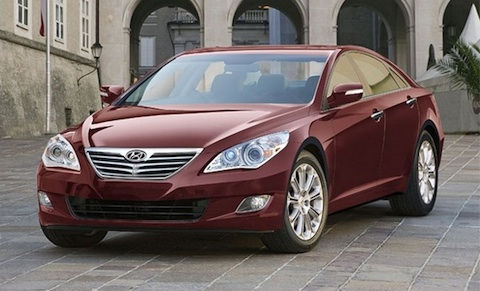
Imagine, for a moment, that you're forced to invent a new candy with the specific objective of taking a bite out of the market segment comfortably satisfied by M&M's, Skittles and Reese's Pieces. Sounds daunting, right? With that in mind, the all-new 2011 Hyundai Sonata is being placed right back into the middle of the hotly-contested family sedan segment, already occupied by such established players as the Honda Accord, Toyota Camry, Nissan Altima, Ford Fusion and Chevrolet Malibu, to name just a few.
Completely redesigned for 2011, the Sonata is freshly styled and more spacious than its predecessor. It brings a few innovations to the game, including a new direct-injected four-cylinder powerplant mated to a six-speed automatic – yet it has no V6 option. We put a couple hundred miles on the new Sonata in San Diego.
Erase everything you know about yesterday's Sonata. Forget those memories, delete the images. Reformat the hard drive. About the only significant things the all-new 2011 model has in common with its predecessor is the name badge on the decklid (now moved to the other side of the trunk) and the fact that they both burn a liquefied petroleum product and roll to their destination on pneumatic tires.
Now in its sixth-generation, the newest Hyundai dumps its consistent ho-hum styling in favor of what the automaker calls a "fluidic sculpture design." Created by the Hyundai Design Center team in Irvine, California, the sleek new four-door is a fresh face in a segment full of cookie-cutter sedans. Interesting and stylish, the Sonata offers an engaging mix of traditional sedan and four-door coupe rolled into one. Take special note of the chrome strip running from the tail of the headlamps clear to the base of the C-pillar, and the door handles deliberately positioned at different heights to aesthetically complete the bold character lines. The exterior is unique, rather exhilarating, and it looks downright expensive. We like it.



While the styling visually suggests otherwise, the Sonata is among the shorter "mid-size" vehicles within its competitive segment. The 2011 Hyundai Sonata and the Honda Accord are the only two in this class with an EPA "large car" classification – the Camry, Altima, Fusion and Malibu are all considered "mid-size" cars by the agency. Interestingly enough, the Sonata has the most total interior volume in the segment.
The Sonata's cabin continues the same "sculpted" theme as the exterior. Understandably, it debuts as a much more modern (um, futuristic?) looking cockpit. There are plenty of bluish lights, digital displays, buttons and even a hat-tip to Volvo for the humanoid-look climate control display. With knobs and buttons abound, it takes a few minutes to get accustomed to the vehicle's operation. But, after a few hours behind the wheel, it comes naturally. In practice, the human interface works even better than it looks, which is what really counts.




Under the hood is Hyundai's new direct-injected DOHC 2.4-liter GDI four-cylinder. The all-aluminum powerplant, fitted with continuously variable valve timing, is rated at 198 horsepower at 6,300 rpm and 184 pound-feet of torque at 4,250 rpm (the SE model bumps those to 200 horsepower and 186 pound-feet of torque). The Korean automaker offers two different transmission choices. The first is a traditional six-speed manual (M6GF2), the same transmission offered on the Hyundai Tucson. (Hyundai says "only a few percent" of owners will opt for the manual gearbox, so don't expect to see many in showrooms). The other transmission is the automaker's all-new six-speed automatic (A6MF2), also shared with the Tucson. This is Hyundai's first proprietary six-speed automatic (the Genesis and Veracruz use an outsourced Aisin gearbox) that's 26.4 pounds lighter and has 62 fewer parts than its five-speed predecessor. Fitted with a SHIFTRONIC manual shift mode, the SE trim level adds steering wheel-mounted paddle shifters for those Schumacher dreamers.
Unlike last year's model, the 2011 Sonata will not offer a six-cylinder option. Hyundai obviously realizes the Toyota Camry, Honda Accord, Nissan Altima, Ford Fusion and Chevrolet Malibu – the Sonata's primary competitors – are all offered with four- and six-cylinder powerplants. However, the Korean automaker isn't flinching. When asked why the new Sonata doesn't offer a V6 option, John Krafcik, president and CEO of Hyundai Motor America, boldly predicts that "V6 engines are going the way of the dinosaur." (Krafcik even went so far as to predict that no midsize sedans will have a V6 option in 2016 – the year more stringent EPA fuel economy regulations are enacted).
Power-hungry mid-size family sedan buyers shouldn't worry, as Hyundai is expected to introduce a turbocharged variant of the 2.4-liter GDI four-cylinder very soon. When talking about that engine, Krafcik smiles and says the yet-to-be-released turbocharged engine is "very delicious" (his exact words, not ours). It has an "endless reservoir of power... and we are shooting for the same EPA fuel economy as the normally-aspirated variant," he boldly adds.


Sure, a direct-injected four-cylinder is technically advanced and innovative, but it really isn't big news these days. What is big news is fuel economy and this is where the 2011 Hyundai Sonata climbs to the top of the podium. According to official EPA numbers, the Sonata earns 24 miles per gallon city and 35 mpg highway with the manual transmission and 22 mpg city and 35 mpg highway with the automatic. While those impressive efficiency numbers equal its four-cylinder challengers in the city cycle, all fall behind the Sonata in highway testing. When you consider even the strongest competition cannot muster more than 190 horsepower from their four-cylinder offerings, the 2011 Hyundai Sonata doesn't just beat its competition in the fuel economy battle, it frankly slaughters them. More on this later.
Posting big fuel economy numbers isn't easy. Hyundai not only focused its attention on the powertrain and fitted the Sonata with the aforementioned direct injection and efficient six-speed automatic transmission, but it has also added a "smart" alternator that pulls its power primarily when coasting. There is a low friction driveline with a unique bearing design, and low rolling resistance tires on all four corners. The body was sculpted with an aerodynamic design – an impressive drag coefficient of .28 – presenting a sleek profile to the wind. Lastly, the engineers optimized the body structure to save weight.

2011 Hyundai Sonata Limited
Tipping the scales at just 3,199 pounds, the 2011 Sonata is lighter than nearly all of its four-cylinder competition – 70 pounds lighter than the Accord and upwards of 108 pounds lighter than the Camry. It pays off in power-to-weight ratio, with the Sonata again leading the pack as it hauls around just 16.2 pounds-per-horsepower (for comparison, the Camry is 19.6, the Accord is at 18.5 and the Fusion is at 19.1). Don't think the lightened structure compromises safety either – the Insurance Institute for Highway Safety (IIHS) named the 2011 Hyundai Sonata one of its Top Safety Picks for this year.
The new chassis boasts improved body rigidity over the outgoing model, creating a more capable platform for the suspension. Speaking of underpinnings, the 2011 Sonata wears independent MacPherson struts up front and an independent multi-link design in the back. There are stabilizer bars front and rear and the SE trim level gets sport suspension tuning. Disc brakes are fitted on all four corners and tucked inside standard 16-inch wheels (the Limited models wear 17-inch alloys, while the sporty SE models have 18-inch wheels). An electrically-assisted steering rack alters boost based on engine speed (the SE trim level features a "sport" feel) and the Sonata also offers a class-leading turning diameter of just 35.8 feet (the Accord and Fusion add a couple of feet to that – kissing curbs).




Hyundai is offering three trim levels (GLS, SE and Limited) for the 2011 Sonata and several equipment packages. By the time you mix and match the trim levels, transmission and option packages, there are eight different models altogether.
Base price for the standard GLS model starts at just $19,195 (add $720 destination to all pricing), the sporty SE from $22,595, and the top-of-the-line Limited begins at $25,295. All models share the same engine, transmission choices, and full complement of safety equipment. To briefly summarize: The GLS starts with a manual transmission, cloth upholstery, manual seat controls, steel wheels, remote entry and a long list of power convenience equipment. An available "Popular Equipment Package" adds a power driver seat, 16-inch alloy wheels and interior trim upgrades among other things. The SE model starts with the automatic transmission, cloth upholstery, sport suspension, 18-inch alloy wheels and differentiating trim. The Limited models are fitted with leather upholstery, dual-temp climate control, a power-operated sunroof and 17-inch alloy wheels. Navigation with a high-res touch screen is also optional on all trim levels. Hyundai predicts about 60 percent of buyers will opt for the base GLS model, 10 percent will choose the SE, and the remaining 30 percent will step up to the Limited.
Consumers will be happy to hear that every 2011 Hyundai Sonata comes with iPod/USB connections, XM Satellite radio and Bluetooth phone connectivity as standard equipment – items are still optional on some cars costing three times as much. The base audio package feeds 104 watts through a six-speaker system (with AM/FM/XM/CD/MP3). A 360-watt system, adding a subwoofer and a six-disc CD changer, is optional on the GLS and SE and standard on the Limited. Audiophiles who buy the Limited may also upgrade to an even more powerful 400-watt system by Infinity.




We took first pick from more than a dozen brand-new Sonatas lined up outside our hotel, each with a set of keys ready to go. Attempting to satisfy the enthusiast within us, we jumped into a "Venetian Red" SE model first. Your writer's six-foot two-inch frame slid into the driver's seat with plenty of room. In fact, the seat had to be moved forward a bit for comfort (later that afternoon, we jumped into the rear seat behind "ourselves" and discovered that space and legroom was more than adequate). Outward visibility is good, and we didn't find any large blind spots on either side that wasn't solved with a simple mirror adjustment. We did find ourselves wanting some back-up sensors – no camera, just the simple beepers – to let us know where the rear bumper was during backing maneuvers.
Foot brake released and transmission in gear, we pulled out of the hotel. First impressions – the important ones – are that the new four-cylinder powertrain is just fine. Sure, it's no dragster, but it will chirp its front tires pulling away from a corner (would that be the litmus test?). We merged with traffic smoothly and settled down to a sedate cruise as we looked for the road out of town. The in-house six-speed transmission shifted nearly imperceptibly as it conducted the engine delicately through its paces. Power delivery of the 200-hp four is smooth, but the engine sang in a typical four-pot key (read: not so pleasant). The low rolling resistance tires did make a bit of a racket, but it was only evident because wind noise and is surprisingly low, even on the highway.

Hyundai will never claim the Sonata is a four-door sports car. Nevertheless, our burgundy SE sedan held more than its own when pressed into the corners. The steering was nicely weighed, and the vehicle's overall balance was surprisingly good. Nobody at Hyundai could tell us the weight distribution from memory, but the vehicle's overall low mass and suspension tuning made it enjoyable to drive at spirited speeds. We likely pushed the Sonata harder than most owners will during an unexpected emergency maneuver – and lived to talk about it.
Later in the afternoon, we took a higher-end Limited model for a 75-mile spin. Though the steering was slightly less responsive than the SE and the ride was marginally softer, it never put us off – although we admit preference for the sportier model. Funny thing, our wives, girlfriends, in-laws, neighbors and friends would rationally prefer the standard softer suspension for their Sonata family sedan. Not us, we like the SE.
We'd be remiss to not discuss fuel economy, as the Sonata's left a huge impression on us. As mentioned, the EPA rates the automatic models we were driving at 22 mpg city and 35 highway. In usual fashion, we typically take those EPA number and subtract a couple points to get "real world MPG," right? Well, it seems the 2011 Hyundai Sonata is also out to dispel that age-old calculation. In our "real world" driving up and down the hills surrounding San Diego, the on-board computer calculated 37.8 MPG during the morning trip... and we could have easily pushed 40 MPG had we attempted some hypermiling tricks.

Demonstrating the impressive mileage from the new direct-injected four, the Hyundai team hosted a fuel economy contest. Most drivers arrived back at the hotel with fuel economies in the high-30s and more than a handful dropped into the mid-40s. The day before our arrival, two teams topped an amazing 47 mpg and won a nice dinner for their efforts. Even if we assume the on-board computer was a few miles-per-gallon optimistic, the Sonata was still delivering efficiency more commonly associated with hybrids.
Fuel economy will undoubtedly draw consumers to the new Sonata. Others will be "emotionally connected" and impressed by the upscale styling and the spacious, modern interior. Some will take comfort in the automaker's 10-year/100,000-mile powertrain warranty and the five-year unlimited-mile roadside assistance program. Many will be drawn by a window sticker that represents value. Regardless of the motivation, Hyundai has been very successful getting people to buy its products lately. Recent sales figures show its new introductions, both car and SUV, have all been very well received by consumers. The 2011 Sonata is yet another sweet addition to that proven lineup, and it's got a pretty hard candy shell to boot.
[Source: Autoblog]
